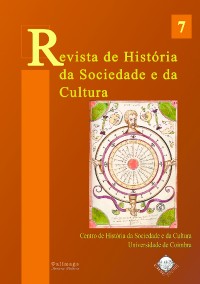Please use this identifier to cite or link to this item:
https://hdl.handle.net/10316.2/39688| Title: | Aspectos da presença eclesiástica em terras de Seia na Idade Média: Inquirições Gerais de 1258 | Other Titles: | Aspects of the ecclesiastical presence in the Seia district in the Middle Ages: the Inquirições Gerais of 1258 | Authors: | Campos, Maria Amélia Álvaro de | Keywords: | Inquirições Gerais of 1258;Seia district;ecclesiastical property;ecclesiastical settlement;parish churches;Inquirições Gerais de 1258;a Terra de Seia;propriedade eclesiástica;couto eclesiástico;igrejas paroquiais | Issue Date: | 2007 | Publisher: | Centro de História da Sociedade e da Cultura | Abstract: | Neste estudo faz-se uma caracterização genérica da implantação eclesiástica na Terra de Seia à época da realização das Inquirições Gerais de 1258. Com base na análise da informação contida no registo destes inquéritos e recorrendo, sempre que possível, ao conteúdo de outras fontes medievais, individualizamos as instituições eclesiásticas presentes neste espaço, quantificamos, caracterizamos e cartografamos a sua propriedade,
dando a conhecer, para alguns casos, a origem e evolução dessa implantação.
A Sé de Coimbra e o mosteiro de Santa Cruz da mesma cidade surgem, nesta documentação, como os principais proprietários do solo e detentores da jurisdição eclesiástica nesta espacialidade, merecendo-nos, por esse motivo, uma atenção especial. Por outro lado, destacamos propriedades adscritas a outras congregações monásticas – S. João de Tarouca, S. Jorge de Coimbra, Santa Maria de Maceira Dão e S. Pedro de Folques – e às Ordens militares do Templo, Avis e Hospital.
Neste contexto, apresentamos ainda a instituição e evolução histórica do couto de São Romão que realçamos pelo carácter paradigmático que assume enquanto unidade de jurisdição eclesiástica.
Por fim, da informação relativa às paróquias locais, expomos o estudo da sua propriedade fundiária e a identificação dos seus oragos e padroados. This study provides a general characterisation of the ecclesiastical presence in the Seia district during the time of the Inquirições Gerais (survey of land ownership) of 1258. Based on an analysis of the information contained in the records of these inquiries and, whenever possible, using other medieval sources as well, we have studied the ecclesiastical institutions present in the area individually and have quantified, categorised and mapped out their properties, thus providing, in some cases, information on the origins and evolution of this presence. The Coimbra Cathedral and the Santa Cruz monastery in the same city emerge in these documents as the main landowners and authorities responsible for ecclesiastical jurisdiction in the area, and therefore merit special attention. In addition, we highlight the properties registered as belonging to other monastic communities – S. João de Tarouca, S. Jorge de Coimbra, Santa Maria de Maceira Dão and S. Pedro de Folques – and the military orders of the Templars, Avis and Hospital. Within this context, we also discuss the founding and historical development of the São Romão settlement, emphasising its paradigmatic nature as a unit of ecclesiastical jurisdiction. Finally, on the basis of information relating to local parishes, we provide a study of their landed property and identify patron saints and secular patrons. |
URI: | https://hdl.handle.net/10316.2/39688 | ISSN: | 1645-2259 2183-8615 (digital) |
DOI: | 10.14195/1645-2259_7_2 | Rights: | open access |
| Appears in Collections: | Revista de História da Sociedade e da Cultura |
Files in This Item:
| File | Description | Size | Format | |
|---|---|---|---|---|
| aspectos_da_presenca_eclesiastica.pdf | 5.88 MB | Adobe PDF |  |
Items in DSpace are protected by copyright, with all rights reserved, unless otherwise indicated.
